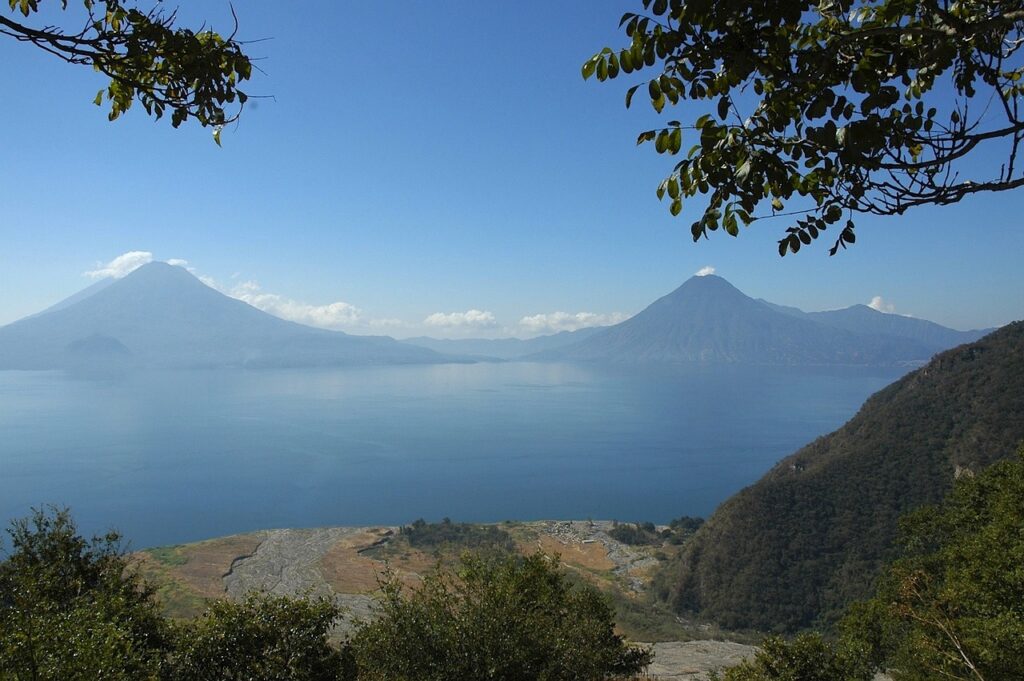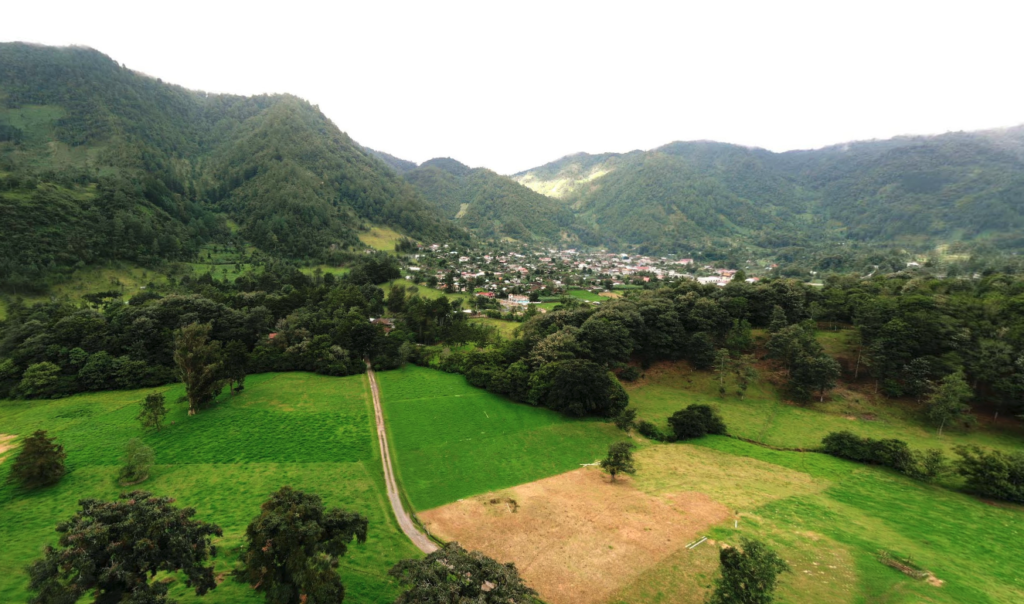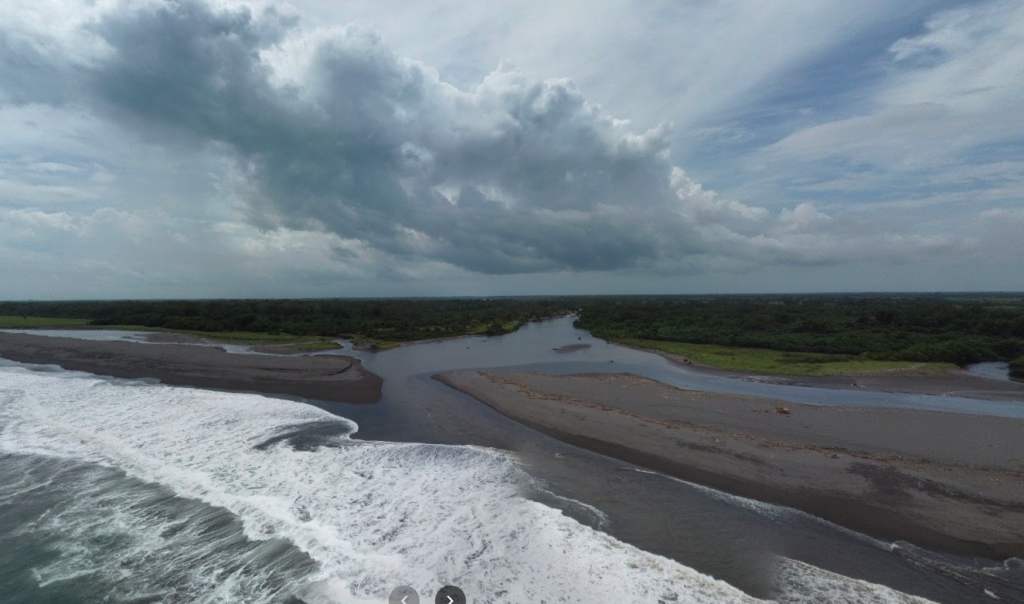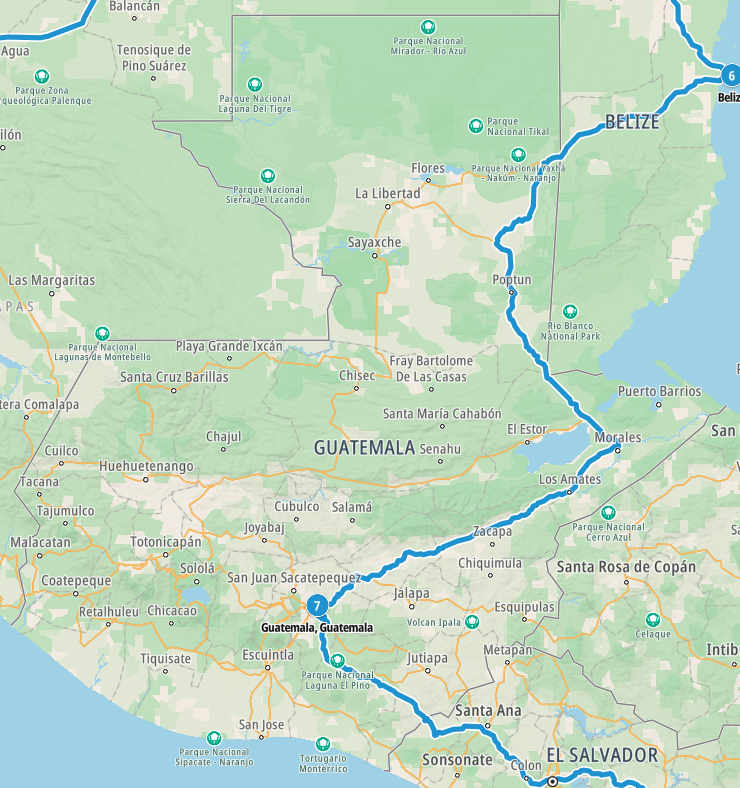Guatemala / Republic of Guatemala / República de Guatemala – Let’s explore here

What’s it like in Guatemala?
Guatemala is a country in central America, about the same size as Iceland. Guatemala’s population is around 18 million (2023), making it the most populous country in central America and its capital, Guatemala City is home to almost 1 million. Guatemala was main home of the Maya civilization, and Guatemala City is built on the site of the Mayan city of Kaminaljuyu, founded around 1500 BC.
Guatemala is divided into three major regions – the highlands, where two mountain chains are located, the Pacific coast, south of the mountains, and the densely forested Petén region, north of the mountains. All of the major cities are located in the highlands and Pacific coast regions, whereas Petén is sparsely populated. The highest point in Guatemala is the volcano Volcán Tajumulco, at 13,789 feet (4,203 m) above sea level.

A bit about the history of Guatemala
Pre Colonial Era
Before European arrival, Guatemala was inhabited by various indigenous groups, most notably the Maya civilization. The Maya were advanced in areas such as mathematics, astronomy and architecture, and their civilisation flourished for several centuries. Notable Maya cities like Tikal and Copán, located in modern-day Guatemala, were major centers of culture, politics and trade.
Spanish Conquest and Colonisation
In 1523, Spanish conquistador Pedro de Alvarado led an expedition into the region, eventually conquering the Maya and claiming Guatemala as part of the Spanish Empire. The Spanish colonisation introduced European agricultural practices, Christianity, and the exploitation of indigenous labour, particularly in the form of the encomienda system. Over the next several centuries, Guatemala became an important colonial territory, with its economy centered around agriculture, particularly the production of indigo and coffee.
Independence and Early Nationhood
In 1821, Guatemala, along with the rest of central America, declared its independence from Spain. Initially, Guatemala was part of the Mexican Empire, but it soon became a part of the United Provinces of Central America after Mexico’s collapse. The provinces faced political instability, with frequent civil wars and attempts to maintain unity. In 1838, the United Provinces of Central America dissolved, and Guatemala became a fully independent nation.
The Rise of Dictatorship and US Influence
Throughout the late 19th and early 20th centuries, Guatemala experienced political instability. Military and authoritarian governments were frequent, with a rising influence from the United States, especially in economic matters. The US was heavily involved in the development of the Guatemalan economy, particularly in the agricultural sector, with the United Fruit Company being a major player in the production of bananas.
1954 US Backed Coup
In 1954, a US backed coup overthrew the democratically elected government of Jacobo Árbenz. Árbenz had initiated land reforms that threatened the interests of US corporations, particularly the United Fruit Company. The coup led to decades of military rule and civil conflict in Guatemala, marking the beginning of a long and brutal period of repression.
Civil War and Human Rights Violations
From 1960 to 1996, Guatemala was embroiled in a civil war between the government and left wing insurgent groups. The war resulted in tens of thousands of deaths, most of them among indigenous civilians, who were often targeted in brutal military campaigns. The war ended with the signing of the Peace Accords in 1996, which helped establish a fragile peace but left deep scars in the nation’s social fabric.
Post War Era and Political Challenges
In the years following the peace agreement, Guatemala has faced significant challenges in terms of political stability, crime and poverty. Corruption within the government has been a persistent issue, leading to a lack of trust in institutions. However, the country has made strides in democracy, with regular elections and increasing political participation. In recent years, Guatemala has also been grappling with the issue of drug violence and gang activity, as well as the ongoing struggle for justice and accountability for human rights violations committed during the civil war.
Current Situation
Guatemala remains one of the poorest countries in Latin America, with significant inequality and challenges related to education, healthcare and infrastructure. Despite these challenges, it remains an important regional player in central America, with a growing economy and a strategic position as a bridge between North and South America. The nation continues to deal with political instability, corruption, and efforts to strengthen democratic governance.

Guatemala road trip
Our Guatemalan road trip is part of a much larger North American road trip.
Map of our road trip through Guatemala

Our planned Costa Rican road trip takes us from Belize, heading towards the capital, Guatemala City, before moving on to El Slvador.
No doubt we’ll explore the country much more than this continent-spanning short route shows, in particular checking more of the coast and inland Guatemala.
Hopefully our journey will improve our knowledge of this intriguing and beautiful country, and enable us to meet some interesting people. We’ll be updating this page at that time – don’t forget to check back 🙂
What’s it like to drive in Guatemala?
They drive on the right hand side of the road in Guatemala. Road conditions are poor, as are driving standards.
We’ve also created a dedicated page to driving abroad, which you might find helpful 🙂
What currency do they use in Guatemala?
In Guatemala they use the Guatemalan Quetzal. The US dollar is also widely accepted. Cash is widely used. The use of credit / debit cards is widely accepted in major cities, although not in rural areas. Travellers cheques are not accepted in the main. There are ATMs in cities, although not all accept foreign issued cards.
You should make yourself aware of the amount that your bank charges you for using credit and debit cards abroad. Often credit cards are cheaper for purchasing items directly, and for withdrawing cash from ATMs.
What language do they speak in Guatemala?
They speak Spanish in Guatemala. K’iche’ is also widely spoken in the central highlands.
What time zone is Guatemala in?
Remember, when you’re planning your next trip to take a look at what time zone it’s in.
Do I need a visa to visit Guatemala?
We’ve created a dedicated, more comprehensive page on visas, which you should find helpful. Check it out!
Is wild camping legal in Guatemala?
Yes, wild camping is fine in Guatemala, although make sure the land is not private.
What plug / socket type do they use in Guatemala?
In Guatemala they use plug / socket types A and B.


Health issues in Guatemala
Is it safe to drink water in Guatemala?
No, it is not safe to drink tap water in Guatemala. Bottled water is readily available across the country.
What vaccinations are required for Guatemala?
This NHS website is kept up to date with all relevant information on vaccinations in Guatemala.
Phones in Guatemala
What is the country calling code for Guatemala?
The country calling code for Guatemala is +502
What are the emergency phone numbers in Guatemala?
- The emergency number for police in Guatemala is: 110 / 120
- In Guatemala, the emergency number for ambulance is: 128
- The emergency number for fire in Guatemala is: 122 / 123
If you’ve got some useful info that you’d like to share, let us know!
And don’t forget to check out all the other pictures!
